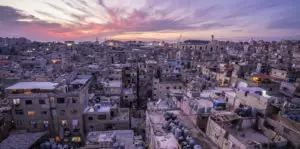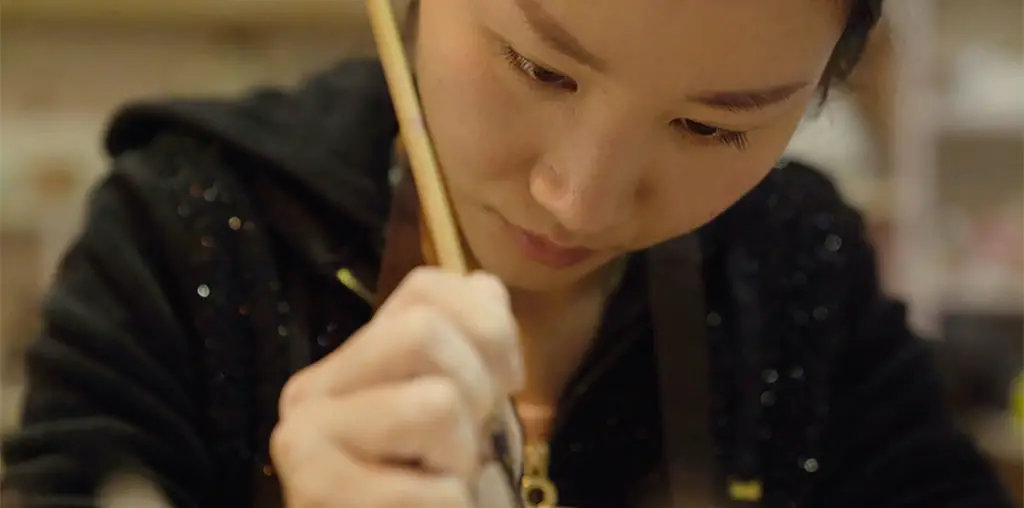
But there isn’t a dispute that the documentary’s family portraits aren’t evocative and empathetic or that the showcased stories aren’t increasingly important. In the Shadow of Beirut doesn’t flinch when documenting physical and emotional pain, as well as the ever-present social pressures forcing everyone’s hands. But what makes this film unique is the filmmakers managing to instill a sense of cautious optimism in the movie’s final third — there are still reasons to laugh, to play, to love. That doesn’t mean that the film ends on a typical high note — with every struggle at the start still being present at the conclusion — but individual perspectives and approaches to these problems adapt with each new paradigm shift. No matter what, they do not give up or give in.

Abu Ras (38) exhales smoke from a cigarette as he looks out over Sabra from the top of a building in Shatila.
“…a required viewing which has the potential to evolve into a rallying cry…”
It’s hard to sell a film as inspiring to audiences when the majority of your experience will be in abject despondency, but that is my honest reaction to In the Shadow of Beirut. Every family’s near-superhuman tenacity is nothing short of awe-inspiring, and my emotional reaction to the experience equally extends to the filmmakers’ efforts. While Stephen Gerard Kelly’s cinematography captures the jagged underbelly of the trash-strewn alleyways and half-rotten homes that make up the bulk of Sabra and Shatila, he also captures the subtle lightheartedness of many adults and children who work, play, and live; however they can. The audio mixing and sound design manufactured by Peter Blayney adds a vital element of earthy tactility to each sequence, strengthening the immersive impact of every interaction and conflict. Co-editors Zeina Aboul-Hosn and Iseult Howlett deliver a measured and metered final cut which ensures fairly equal on-screen treatment of each spotlit family while also providing a comprehensive and artistic overview of the slums with little to no soapboxing needed to prove its points.
In the end, we walk away from In the Shadow of Beirut, knowing omnipresent dangers, drug abuse, and death stalk the city’s streets. We see how xenophobic socioeconomic policies, systemic abuse and mismanagement, and global apathy continue to stress the city, country, and region past their breaking points. But we also see the humanity present behind the startling statistics and trend lines. There is still life behind the eyes of each weary face and still deep-felt reasons to strive for a better tomorrow, even in the wake of such destruction and desolation.
In the Shadow of Beirut is painful in every sense of the word. But it’s a required viewing that has the potential to evolve into a rallying cry for anyone with the power to act and aid the situation — which should be all of us.

"…a harrowing portrait of misery, perseverance, and somehow hope."


